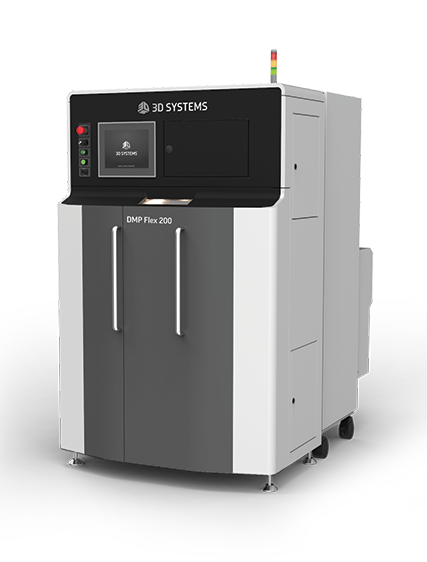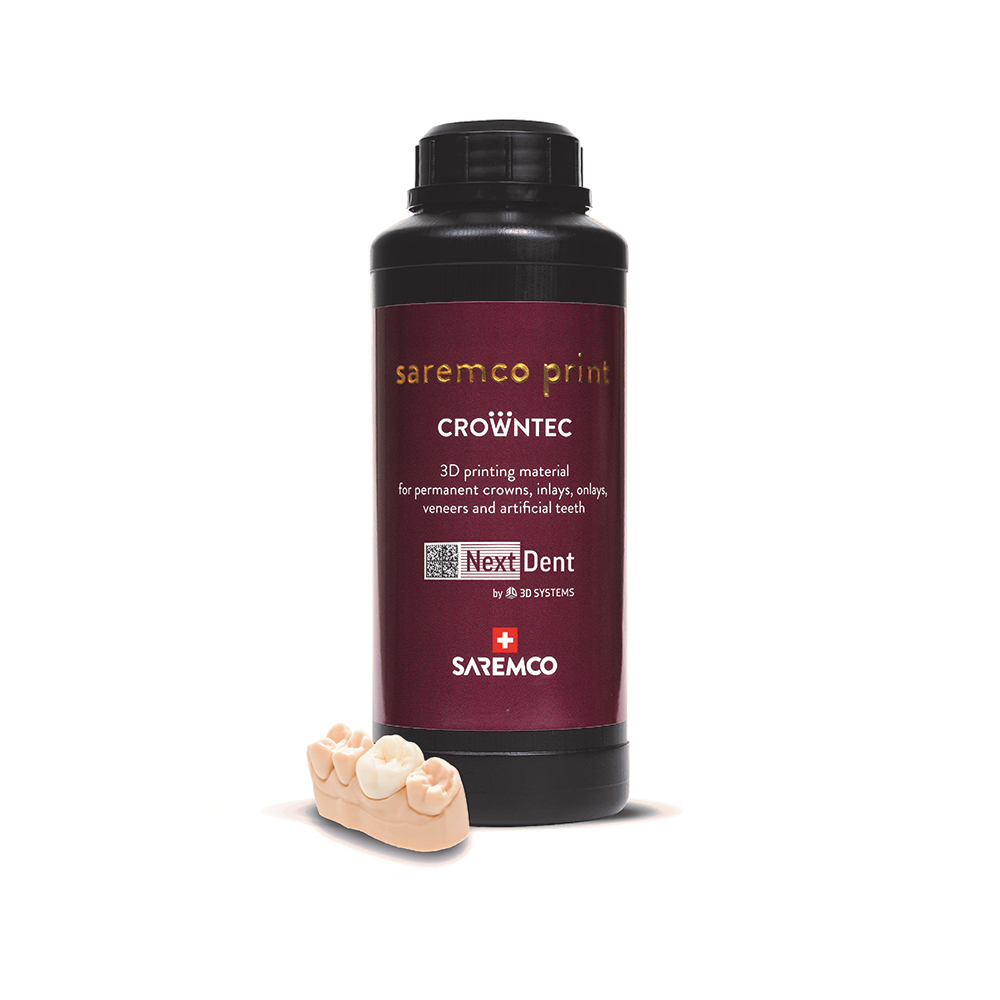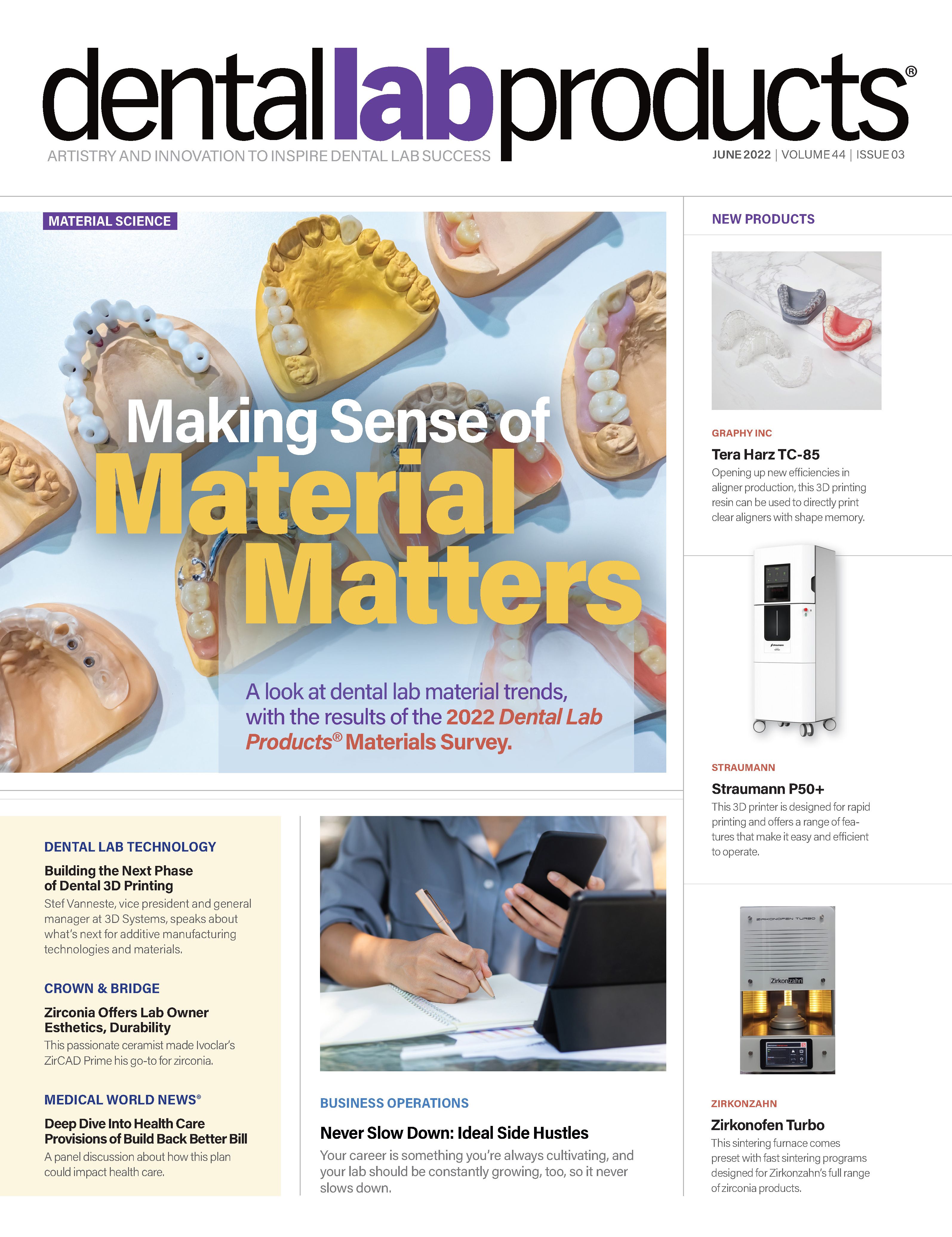Building the Next Phase of Dental 3D Printing
Stef Vanneste, vice president and general manager, dental at 3D Systems, speaks with Noah Levine, editorial director of Dental Lab Products®, about what’s next for additive manufacturing technologies and materials.
Noah Levine: How has the COVID-19 pandemic impacted 3D printing in dentistry?
Stef Vanneste:The evolution or the digitization of the dental industry has not stopped. In a certain way, COVID-19 accelerated that, because people started saying, “Let’s not send models and practical stuff around from door to door. Let’s start sending files.” So that helped people get a little more interested in this.
NL: How much future dental lab production will feature 3D printing?
SV: It’s going [be] a big part of it—not 100%, because there’s always going to be the manual work of finishing and maybe some postprocessing. Although we’re also looking into how we can make that more user-friendly. It’s [definitely] going to take [most of] the parts in dental labs.
NL: How is the status of 3D printing in dental labs different from the status of printing in clinics?
SV: There are a couple things that still need to be changed or adopted. Lab technicians already are 1 step ahead, but to a degree, they still have the fear of the unknown and the idea that digital is difficult, so we [must] make sure they get the right information and make more training available to them.
We see similar things in the clinics, but they’re 1 step behind. In this case, they are almost over enthusiastic. They think of 3D printing as, “I scan it, I print it, and it’s done.” We need to help get them out of that feeling and say, “Yes, that’s true in a sense, but we’re not there yet. You still need to do some designing of the files, then send it to the printer, then postprocess and postcure it.”
There are a lot of manual interactions they tend to forget, so that is something we need to explain to them bit by bit, because then they will come into the phase where the lab technicians are today—the fear of the unknown and thinking it is always going to be difficult. And now we can go back to the training and say it’s not that difficult. But first, it’s not as easy as you expect today.
NL: Will 3D printing end up being primarily used in labs or clinics?
The recently launched DMP Flex 200 brings metal printing to new labs, as this system is capable of quickly producing parts from CoCr and titanium.

SV: There’s a place for 3D printing on all levels. For the smaller parts, [such as] a permanent crown or a veneer, that is an ideal printing workflow you could do chairside. It’s 1 visit—you scan it, you print it, you postprocess, cure it, and you place it. The labs will have bigger works, and at larger manufacturing sites, you can have the metal printing, for instance, but there’s a place for the printer on the clinic side.
NL: How is the growth of group dental practices impacting the use of 3D printers?
SV: They have the advantage of numbers. You don’t buy a printer for 1 print a day; you buy for the routine [and] to continuously start printing and using it. If you have a group practice where you have more patients, of course, it can be more useful to have a printer. For a group practice, consistent workflows become more important. It’s not only about the printer—it’s about the scanner, the software, [and] the materials. It is the integration of the workflow that is important. And they can benefit from that.
NL: What are some of the hurdles that both the technology and the materials of 3D printing need to overcome to be more widely adopted throughout the dental industry?
SV: There is still a lot of room for improvement when it comes to ease of use, especially when you look at what still needs to be done after the scan is completed. You still need to design the restoration, and making the software even easier to use is becoming very important. With our software, we tap into [artificial intelligence] to make it more user-friendly.
Of course, on the material side, we are very open and honest that the denture material out there today…is not yet up to the standard of what the current analog systems can provide. But the color is almost there, [and] the translucency and strength are also getting closer.
On the fixed side, we’re improving with the new CROWNTEC permanent crown material. It’s stronger and it has improved color, but it’s not yet on the same level as traditional ceramics. So, there is still a lot of room for improvement in that side, as well.
NL: Can you tell us a bit more about CROWNTEC?
Dental devices made with CROWNTEC and the NextDent 5100 digital dentistry solution are 30% stronger than those made using previous generation resins.

SV: Well, the biggest step forward in 3D printing is that it’s not temporary. This is something that can last a long time. The material is harder, more translucent, [it fits] better, and patients feel good about the results, so that’s what it’s all about. Because in the end, it’s about esthetics, comfort, better patient outcomes, and that is basically what this material is doing.
NL: What does the future of
3D printer materials look like?
SV: I think it is different applications. Everybody is looking into the orthodontic space, how we can improve there—especially on the workflows—how to make it user-friendly, and maybe even go into direct printing. Of course, denture material will likely become more comfortable for the patient.
With direct materials, we made a big step ahead with CROWNTEC, but it’s not there yet. The challenge is how [to] come closer to zirconia, or even start printing zirconia. So, it’s more and more applications and broader use, in general. That’s the exciting part.
NL: What role does 3D Systems want to play in the future of 3D printing technology?
SV: We always want to be on the forefront. When 3D printing was born, 3D Systems was there. That’s the motivation to keep going. It’s a challenge, but I think we live up to it.
We just launched the DMP Flex 200 metal printer in February, and I underestimated the attention it would get from the market. Of course, we are also investigating a lot with biotech printing, and with the recent investment in Kumovis, we are also working with PEEK printing.
So, [3D printing is changing a lot], not only material-wise but also platform-wise. [Of course], there are many things ongoing, [and] lots of them are still behind closed doors, but you definitely need to keep an eye open. Innovation is not on hold at 3D Systems.
NL: How far can dental 3D printing
go in dentistry?
SV: I think milling will become [more and more] obsolete because it’s a proven process, but there is a lot of waste, time, and cost to it. More and more 3D printers are in the position to take over what a mill is doing today.
If you look at the broader picture of 3D printing in an industry, it will never take over 100%. There’s always going to be some limitation. In the future, limitations will [most likely] be more on the cost side. But dental is an ideal market for 3D printing. There are 9 billion people out there, and there are 9 billion different dentures out there. So, it’s unique every time, and when you need to produce a lot of unique pieces, that is what a 3D printer does best.
We see big differences between regions in terms of how fast this evolution and the introduction of digital is happening. That’s very exciting to see, and we try to take what we can learn from one region to see [whether] we can use that in another region.
For the future, from my point of view, materials are where the innovation lies. Bringing the digitization further into dentistry by supporting them with marketing and training will continue to be important, because the pie is still a lot bigger on the analog side.
We still have a lot of potential to assist dental professionals in providing a better patient outcome. That’s why we’re in it.
